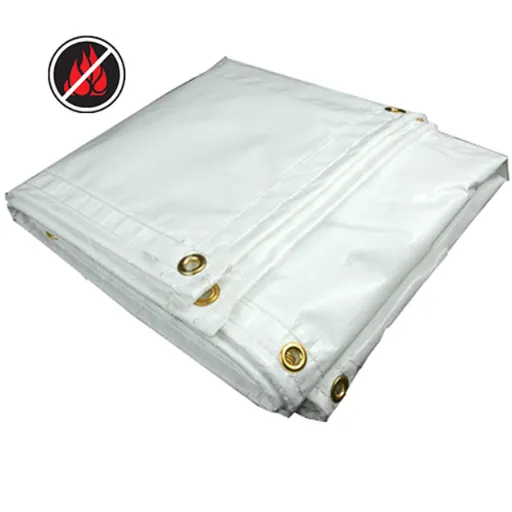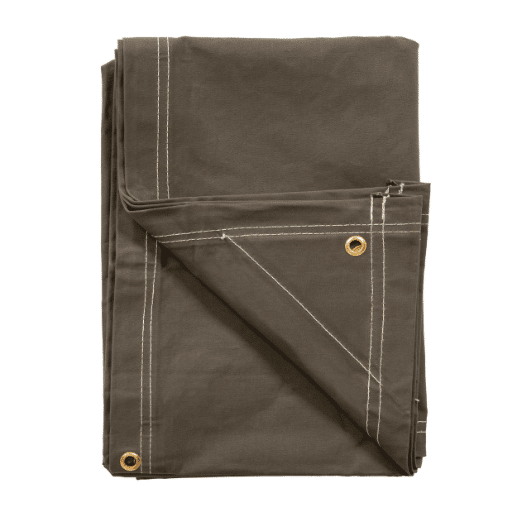Size, when it comes to choosing the perfect tarp, is a choice almost as important. Will the tarp be covering equipment, shielding materials from harsh weather, or ultimately providing a temporary shelter? A matter of appropriate sizing of the tarp can cause so much difference. This complete guide covers everything about tarp sizes, particularly heavy-duty and poly tarps. From standard industry dimensioning to tips on how best to choose the right size for your needs, the goal is to arm you with sufficient knowledge so you can make impromptu decisions. So, stay on with us as we discuss suitable factors and nuances that ensure maximum value and functionality from your tarp purchase.
Understanding Tarp Sizes
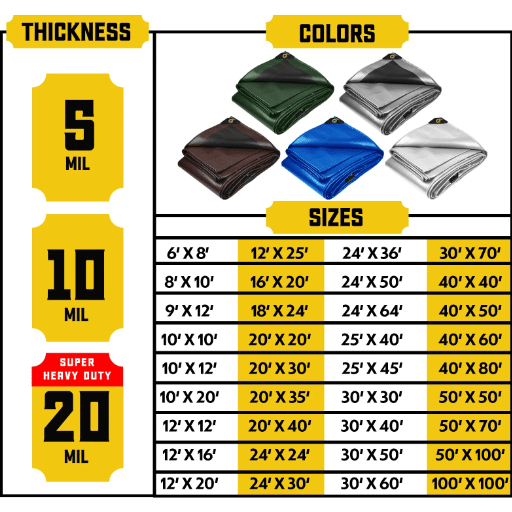
Standard Tarp Sizes Explained
Tarps come in standard sizes to serve different purposes—from the smaller sizes that can be used by individuals for casual needs, right up to extremely large sizes that cater to muscle-intensive industrial ventures. Standard sizes generally include 6×8 ft, 8×10 ft, 10×12 ft, 12×16 ft, and 20×30 ft, though these can sometimes be changed according to specification.
Popular Size Insight:
From data collected recently from search engine trends, the most common search for tarp size is found in the 10×12 feet range, which may be considered to have been sought because of their use in both domestic and commercial work. This size is of pragmatic nature and sufficiently makes sure that it does the job of covering equipment, tent flooring, or firewood protection without itself being weighty or cumbersome to carry.
⚠️ Important Size Consideration
It is vital to remember that the measurements given sometimes are the “cut sizes” which refer to the unhemmed size of the tarp, while the ends are hemmed along with seams in the “finished size” which are generally 4-6 inches shorter. This little detail will come in handy when requesting the tarp to fit the application properly.
Heavy Duty Tarps Vs. Light-Duty Tarps
Strength and use are two important factors to consider in choosing between heavy and light-duty tarps. Heavy-duty tarps usually range anywhere between 12 and 20 mils thickness, making them thicker with better tensile strength, and constructed out of more heavy-duty materials like reinforced polyethylene or vinyl. These are used in almost heavy-duty applications; to give you examples, industrial projects, long-term outdoor sheltering or cover for heavy machinery. These tarps are frequently fitted with additional strength in the grommets and backing so that they resist tearing under tension or bad weather. Heavy-duty tarps can be really useful for roof seeling repair, preparing for a hurricane, and sheltering agricultural crops.
Heavy-Duty Tarps
- Thickness: 12-20 mils
- Materials: Reinforced polyethylene, vinyl
- Applications: Industrial projects, long-term outdoor use
- Features: Reinforced grommets, tear resistance
Light-Duty Tarps
- Thickness: 4-8 mils
- Weight: Lightweight and portable
- Cost: More affordable option
- Use: Temporary coverage, indoor applications
In contrast, light-duty tarps are pretty thin, usually in the range of 4-8 mils in thickness. Such tarps are perfect for use under scenarios that require temporary cover or even indoor uses. They tend to be cheaper and lightweight compared to their heavy duty counterparts. They might be used for covering patio furniture, constructing temporary shelters, or providing light rain or dust protection for goods in transit.
According to recent data gathered from search engines, consumers predominantly demand heavy-duty tarps, with their main aim being to ensure weatherproofing or long-term durability, especially in storm-prone or extreme climatic conditions. While light-duty tarps are generally searched in contexts of DIY projects, camping, or temporary general use. The final decision on which tarps are suitable depends on the purpose of the task, with the appraisal of material strength, durability, and cost efficiency holding great importance in the decision-making process.
Factors to Consider When Choosing Tarp Size
When determining a fit for the type of tarp size, multiple factors come into play in the decision-making process to ensure the end product works best for its intended application. From the recent search data trend derived from search engines, most questions are often asked about how much will the coverage measure, how it will overlap, and how it will be affected by environmental conditions.
Key Sizing Considerations:
- Coverage Area: Determine the measurement of the area exposures that have to be covered, allowing for any overhang depending on what kind of exposure it may need—would generally be 6 to 12 inches for most applications.
- Shape Considerations: Consider the shape of the item or structure; if irregular, then custom sizing or a composite tarp would be considered to cover all sides.
- Wind Exposure: Consider the exposure in the wind because too much might produce flapping or stress resistance decrease under high gales.
The intertwining of the above with the search insight indicates accentuated demand for pre-sized tarps with reinforced edges, marrying ease-of-use with reliability.
Tarp Thickness and Material
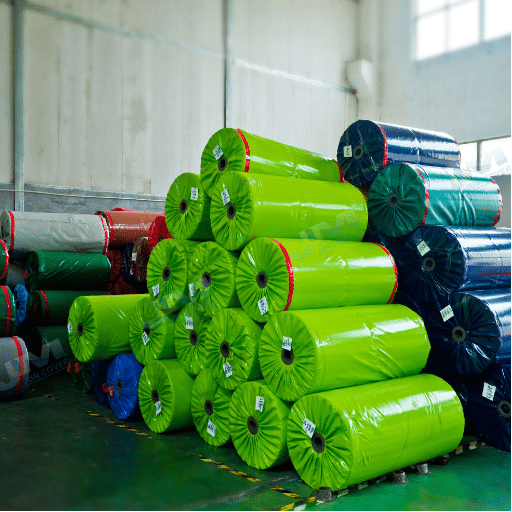
Understanding Tarp Thickness: What Does ‘Mil’ Mean?
The “mil” is a unit of measurement typically used to define a tarp’s thickness. One mil equals 0.001 inches and is considered the standard for determining durability and performance of the kind of material. Heavy-duty applications generally necessitate thicker tarps-those with thicknesses around 10-12 mils-wearing and puncturing resistance plus greater resistance from environmental factors. For lighter uses, these comparatively thin tarps entail a 4-6 mil rating, and they could be considered for short term.
Mil Thickness Guide:
| Mil Rating | Thickness | Best Use |
|---|---|---|
| 4-6 mil | 0.004-0.006 inches | Short-term, light applications |
| 10-12 mil | 0.010-0.012 inches | Heavy-duty applications |
Search trends reveal that the consumer tends to ask frequently as to what thickness of tarp may best serve a given purpose. To elucidate and exemplify further, terms like “best tarp thickness for roofing” and “heavy-duty tarp recommendations” call for thick products that will withstand harsher treatment, especially wind and UV exposure. Therefore, it is advisable to pick a thickness level of tarps according to the mil rating appropriate for a particular service for optimized capacity, longevity, and affordability.
Comparing Tarp Materials: Poly versus Canvas
When choosing between poly and canvas tarps, we have to weigh their characteristics against common search queries, including “poly tarp vs. canvas durability” or “best tarp for outdoor use.
Poly Tarps
- Weight: Lightweight
- Waterproofing: Completely waterproof
- Mildew: Mildew-resistant
- UV Treatment: Often UV-treated
Canvas Tarps
- Weight: Heavier construction
- Material: Natural fibers
- Breathability: Excellent air circulation
- Durability: High abrasion resistance
Poly tarps are lightweight, waterproof, and mildew-resistant: all good qualities for temporary purposes, such as camping or covering equipment. Poly tarps are also UV-treated, making them more durable when subjected to prolonged sun exposure-an important factor raised in many search trend queries concerned with outdoor tarp longevity.
In contrast, canvas tarps are heavier and constructed from natural fibers, which allow excellent breathability and give high abrasion resistance. They are commonly waxed or treated for some level of water resistance, positioning them for more rigorous tasks that require long-term covering of machinery and agricultural implements. Search trends indicate interest in “heavy-duty tarps for industrial use,” substantiating canvas as the preferred choice for long-term applications requiring reliable performance.
Ultimately, it will seem that, according to the trends, consumers list water resistance, UV stability, and durability as the points of consideration when comparing poly vs. canvas. Opting for poly tarps would be advisable for anyone looking for a light-weight and cost-effective option, whereas canvas is preferred for serious outdoor and industrial work where strength and wear resistance are to be considered.
Durability Factors in Tarp Selection
Certain things to look at are most important when considering durability in tarp selection to allow for optimum performance under certain conditions. From recent search statistics, durability is spotted as the most searched parameter, which is viewed more in the industrial and outdoor use cases, thus weightage is put on material composition besides manufacturing quality and environmental resistance in making the selection.
Key Durability Factors:
- Tensile Strength: Resistance to pulling forces
- Tear Resistance: Ability to withstand ripping
- UV Resistance: Protection against sun degradation
- Moisture Resistance: Waterproofing capabilities
The chief factors influencing tarp durability are tensile strength, tear resistance, resistance to prolonged UV radiation exposure, and moisture exposure. Polyethylene tarps, for example, are highly valued for their water resistance, which is lightweight, making them a first-choice for temporary cover solutions; however, they degrade more rapidly with extended UV exposure compared to canvas tarps. Canvas tarps, on the other hand, made from heavy-duty cotton, are better in resistance to tears and are longer-lasting and thus indispensable in applications where abrasion and prolonged interval heavy use are anticipated.
Inconsistently, the most durable tarp, given a particular application, depends wholly on how well the operational requirements suit the material properties. Designated for long-term outdoor exposure, a UV-resistant and chemically treated tarp satisfies best. For mechanically stressed industrial processes, the canvas tarp is irreplaceable.
Common Applications for Different Tarp Sizes

Heavy-Duty Industrial Tarps
Heavy-duty tarps are quintessential implements in an industrial setting, while applications vary according to the durability needs presented: resistance to weather conditions and tearing. The recent trend and search analysis prove that common uses of such tarps involve covering machinery, shielding construction materials from rainfall, and serving as containment barriers in hazardous working areas. The materials used the most in industrial-grade tarps are polyethylene and vinyl because of their high tensile strength and resistance to punctures, UV rays, and chemical exposure.
Industrial Tarp Applications:
- Covering heavy machinery and equipment
- Shielding construction materials from weather
- Serving as containment barriers in hazardous areas
- Protecting materials from UV and chemical exposure
For extreme conditions involving long periods of exposure to bad weather or corrosive substances, reinforced vinyl tarps with heat-sealed seams would be the best alternative, considering its excellent load-bearing and impermeability features. Data shows that UV-resistant polyethylene tarps have great demand in construction sites, which entails protection of equipment and materials from sun damage. Apart from this, their light configuration calls for easy handling even with great strength, making them the most versatile alternative.
Factors like dimensions, weather conditions, and stresses unique to a certain application have to be studied while choosing heavy-duty tarps for industrial use. An optimization of these factors with material advancements speaks of superior performance and cost-effectiveness when the tarps dominate the scene across industries.
Light-Duty Tarps for Household Projects
Light-duty tarps offer an assortment of practical uses for various kinds of household projects. Usually made of materials such as polyethylene and light canvas, these tarps are generally deemed for dust, debris, and light moisture protection. Their lightweight nature offers greater flexibility and needs less storage space, thus making it suitable for covering furniture during remodeling activities, protecting outdoor equipment from light rain, or serving as a temporary barrier in a gardening project.
Indoor Projects
- Covering furniture during painting
- Floor protection during renovations
- Dust barrier creation
Outdoor Projects
- Light rain protection for equipment
- Temporary gardening barriers
- Patio furniture covering
Key Benefits
- Lightweight and flexible
- Easy storage requirements
- Cost-effective solution
According to the latest search data from search engines, the popular questions surrounding light-duty tarps pertain to their resilience and best uses and the quality of their material. In this respect, heavy-duty and extended stress or outright adverse weather conditions would not characterize the ideal application for these tarps. Rather, they shine in low-intensity, short-term tasks. To choose the right tarp for their needs, the homeowner should consider the tarp’s dimensions, thickness (in mils), and UV resistance and aim to align these with the requirements of the targeted project. This targeted choice guarantees a more productive working time and a longer life span for the material.
Specialized Applications of Tarps by Size
In their use, tarps vary greatly in size, with different sizes catering to specific uses in many industries.
For small tarps, which range anywhere from 5’x7′ to 8’x10,’ smaller equipment can be protected, smaller furniture or other items can be covered, and the tarp can also act as a temporary floor guard whilst painting. These sizes are light and easy to handle, thus confining their usage mostly to personal or residential utilization.
Medium tarps in the range of 10’x12′ to 12’x16′ are utilized in agricultural and commercial set-ups. They are set to protect larger machinery, cover hay bales, guard construction materials, and build temporary outdoor shelters across moderate conditions. Their bigger area grants them many more uses at present.
Large-sized tarps (anywhere from 20’x30′ upwards) are applied in heavy-duty situations like roofing, site containment, or disaster relief. Typically, these tarps are backed with reinforcement complicated and are made tougher to endure severe weather and harsh exposure. They mostly on an ad hoc basis pinned down to secure some huge resources like boats, trucks, and industrial equipment; thus, it is unable to miss in any industry that demands sturdy solutions for extended time periods.
Search Trend Insights:
Search trends indicate that queries on sizes of tarps interlay with all kinds of use scenarios, like “best tarp size for pool cover,” the latter indicating seasonal demand for oversized tarps (20’x40′ or greater). The other one would be “tarp size for camping shelter,” which measures the unstated demand for midsize tarps with their transport and setup optimized. Therefore, how to rightly determine the size of a tarp, aside from being practical, must equally be determined by what product specifications are made for in the real world and as an extrapolation from search engine data.
Buying Guide for Tarps
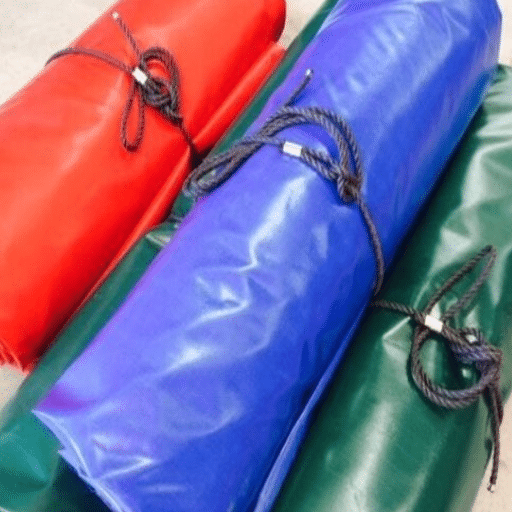
Where To Buy Quality Tarps
Where one looks for quality tarps depends upon combining search-engine marketing data with trustworthy retail outlets. From the latest data available, with the likes of the phrases “best tarp suppliers” and “durable outdoor tarps near me,” it appears both online and brick-and-mortar stores offer the best of quality and price.
Online Retailers
- Amazon: Wide selection, customer reviews
- Tarps Plus: Professional-grade options
- MyTarp.com: Customizable products
Specialty Retailers
- Northern Tool: Industrial/farming focus
- Harbor Freight: Budget-friendly options
- Home Depot: Residential purposes
Online retail stores such as Amazon offer the widest and most diverse choice of tarp sizes, materials, and price ranges and often come with customer Reviews and Ratings, enabling a decision to be made on an informed basis. For more durable tarps, specialty retailers include Northern Tool, Harbor Freight, and Home Depot, for both industrial and farming uses, as well as residential purposes. Meanwhile, suppliers like Tarps Plus and MyTarp.com cater to ultra-professional needs with a selection of customizable products along with their standard lines. Deciding whether camping, covering heavy machinery, or protecting pool coverings should guide the selection between e-commerce, which gives the convenience, and the specialty stores, which offer expertise.
How to Evaluate Tarp Features Before Buying
Evaluating tarp features entails an in-depth consideration of the material used, durability, size, and other performance criteria needed for the application in question. According to the newest industry insights, in addition to search trends, key factors that are often emphasized by manufacturers and users alike are as follows:
🧵 Material Type
The main substance forming the tarp, be it polyethylene, canvas, or vinyl, actually dictates its working. Polyethylene is a light weight and water-resistant compared to other tarps and is good for general protection. The canvas, being heavier, allows for air to pass through and is well suited for outdoor applications. Vinyl tarps are strong and resist industrial chemicals, hence preferred in the commercial environment.
📏 Thickness and Weight
Sometimes, the thickness of the tarp can be measured in mils, and the weight of the fabric can be measured in ounces per square yard; these are crucial for durability and for resisting tears. Thicker tarps are used where heavy-duty applications are in consideration, or where extremely bad weather is to be encountered. Oppositely, lighter tarps are to be used on temporary or easy jobs.
🌦️ Waterproof and UV Protection
Applications exposed to natural elements outdoors-rain or shine-only need that tarp waterproofed-on the outside and inside-and protection against UV light. These will ensure the tarp’s longevity and optimum functionality even in long-term use.
🔗 Reinforced Edges and Grommets
Reinforced edges and rust-resistant grommets give a tarp overnight holding value, owing to conditions of heavy winds or grommet tension. Searches emphasize this feature in grommets that will be used on road reports.
📐 Size and Customization
Select a tarp that will fit the surface area in question. With customizable options in the trend, leading suppliers currently allow clients to specify exact size requirements.
Once these are considered, a buyer should be well placed to make decisions that balance the cost-effectiveness with efficiency in operation. Research via reliable technical online reviews and advice from specialized retailers will further narrow down the options for specific use cases, greatly diminishing instances of underperformance.
How to Select a Proper Tarp Size for Your Needs
Step-by-Step Selection Process:
With these considerations duly noted, the user(s) stand to gain functionally as well as in durability, marked by wastage that comes from tarps acquired with improper sizes.
Maintaining Your Tarps for Longevity
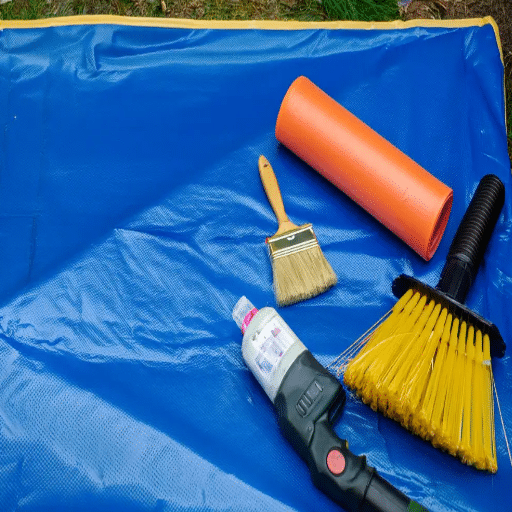
Cleaning and Storage of Tarps
Cleaning and proper storage of tarps help maintain their integrity and increase their lifespan. According to current studies, tarps should be regularly cleaned using mild soap and water, avoiding chemical agents and washing powders that may etch into the tarp’s material coating. After washing, they need to be thoroughly rinsed in clean water to remove residue that may attract dirt or moisture over time. After final rinsing, hang or lay the tarp flat until completely dry, as storing it while damp might cause mold or mildew.
Proper Cleaning
- Use mild soap and water
- Avoid harsh chemicals
- Thorough rinsing required
- Complete drying essential
Storage Conditions
- Cool, dry environment
- Well-ventilated space
- Away from direct sunlight
- Sealed container protection
Folding Technique
- Neat folding reduces stress
- Prevents material creases
- Maintains fabric integrity
- Preserves protective layers
In terms of storage, the vicinity should be as cool and dry with a well-ventilated atmosphere. Neatly folding the tarp decreases stress on the fabric and saves it from characteristic creases that could further diminish the material. Moreover, even with pigmented UV resistance, it is advised that tarps be stored away from direct sunlight since lengthy exposure to UV rays weakens their protective layers. Another level of protection would be placing tarps in a sealed container or a heavy-duty storage bag to reduce the chances of being infested or contaminated by environmental factors. Following these points will guarantee the continued integrity and utility of a tarp over a longer period.
Repairing Minor Damages to Prolong the Life of a Tarp
These minor damage repair techniques can really prolong the useful life of a tarp when carried out promptly. Tears, punctures, or roughening edges are the most common threats to the integrity of a tarp. If they are left to evolve, their quality may degrade. Through the cleaning method of the affected area to rid it of dirt, residues, and moisture should be applied first since these factors can hinder the process. A patch kit specifically designed for the tarp material being repaired, be it polyethylene or vinyl, should be used so that maximum adhesion and durability can be achieved. The use of industrial strength adhesive or waterproof tape should reinforce the patch by fully sealing the edges against the entry of water or dirt.
Repair Process:
- Clean the Area: Remove dirt, residues, and moisture from damaged area
- Choose Appropriate Patch: Use material-specific patch kit (polyethylene or vinyl)
- Apply Reinforcement: Use industrial-strength adhesive or waterproof tape
- Seal Edges: Ensure complete protection against water and dirt entry
According to search engine results and recent studies, regular inspection is paramount with the immediate reduction of damage. In recent times, trends are showing an increasing preference for self-adhesive tarp patches because of the ease of application and durability. For bigger torn areas or whenever the initial structural integrity of the tarp has been compromised, however, the services of a professional or heavy-duty sewing, through UV-resistant-thread, may be necessary. A tarp becomes dependable and stands well across various applications only through the combination of timely repairs and proper maintenance.
Knowing When to Replace a Tarp
Tarp replacement time depends on the condition of the tarp, its age, and the need for continual use. Current search trends indicate that users are mostly concerned with signs of wear, such as fraying of edges, heavy discoloration, and loss of ability to waterproof. These signs indicate that the tarp is not, or certainly no longer capable of, giving sufficient protection. Another identified indication is when the tarp material becomes brittle due to prolonged exposure to UV rays or when large tears or punctures cannot be effectively repaired. For applications that put the tarp under extreme stress, such as heavy-duty industrial use or prolonged outdoor exposure, avert the risk of damage to equipment or cargo by replacing the tarp outrightly on the basis of its expected lifespan as indicated by the manufacturer. The incorporation of considerations with performance data lends to perfect covering and functionality.
⚠️ Replacement Warning Signs
- Edge Fraying: Visible deterioration of tarp edges
- Heavy Discoloration: Significant color changes indicating UV damage
- Loss of Waterproofing: Water penetration through material
- Material Brittleness: Tarp becomes stiff and prone to cracking
- Large Irreparable Tears: Damage beyond effective repair
Frequently Asked Questions
❓ What are the usually available sizes for the tarp?
Any standard tarp size is to suit the requirements, so the sizes can vary. The usual ones are 6×8 feet, 10×12 feet, and 20×30 feet. Those sizes are setup to ensure a reliable form of protection depending on the use, covering equipment, and putting up a temporary shelter. You can even go for custom tarps of your dimensions if need be. While choosing a tarp size, think about how much area you want to cover and the thickness of the tarp as it affects the utility.
❓ Tarp thickness and durability-how are they related?
Tarp thickness is usually expressed in mil, with the thicker tarps being more durable. A 6 mil tarp weighs light and is used for light-duty tasks, while heavy-duty tarps are apt to weigh more between 10 to 30 mil. The greater the mil rating, the firmer the tarp will resist tearing, puncturing, and weathering. Hence, apply tarps thicker enough to pose the greatest level of protection if it’s for construction or any maintenance activity. Yet, always look into the setting to which your tarp will be exposed so you get the right tarping thickness.
❓ What features to look out for in heavy-duty tarps?
Heavy-duty tarps with features such as reinforcement on edges, and grommet placement every few feet for a solid tie-down, are worthy of your attention. Heavy-gauge tarps usually fare well because they are either polyethylene or vinyl, guaranteeing waterproofing, UV resistance, and durability. These features ensure a tarp’s ability to weather the harshest thermos can impose and protect your equipment. In addition, consider the weight of the tarp, as heavier tarps will typically offer greater durability and protection. In the right hands, a heavy-duty tarp will protect your gear and be reliable when exposed to less-than-ideal environments.
❓ Can they act as an outdoor tarp?
Yes, tarps are primarily used in outdoor settings all around for camping, landscaping, and equipment protection. Tarps that are waterproof and resistant to UV rays can protect anything surface against sun damage and rain very well, thus perfect for outdoor use. Consider the material of tarp and thickness when selecting a tarp meant for outdoor use, as these may affect the durability and function of the tarp. Whether you want a big tarp for covering a huge area or just a small tarp for a little focused protection, there exists an ever-expanding spectrum of different sizes and types to suit every occasion in the outdoors.
❓ What are the very factors to be considered while selecting the perfect tarp for my use?
When choosing a tarp, factors to consider include size, thickness (mil), material, and end-use. The length and width need to cover the area under consideration, and thickness stands for durability; for example, a 6 mil tarp may be enough for light applications, but construction will require painting a super heavy-duty tarp on its walls. Further, consider tarp features such as grommets and reinforced edges, and the weather conditions it should withstand. Getting a grasp on all these will prepare one to choose the right tarp for their specific application.

